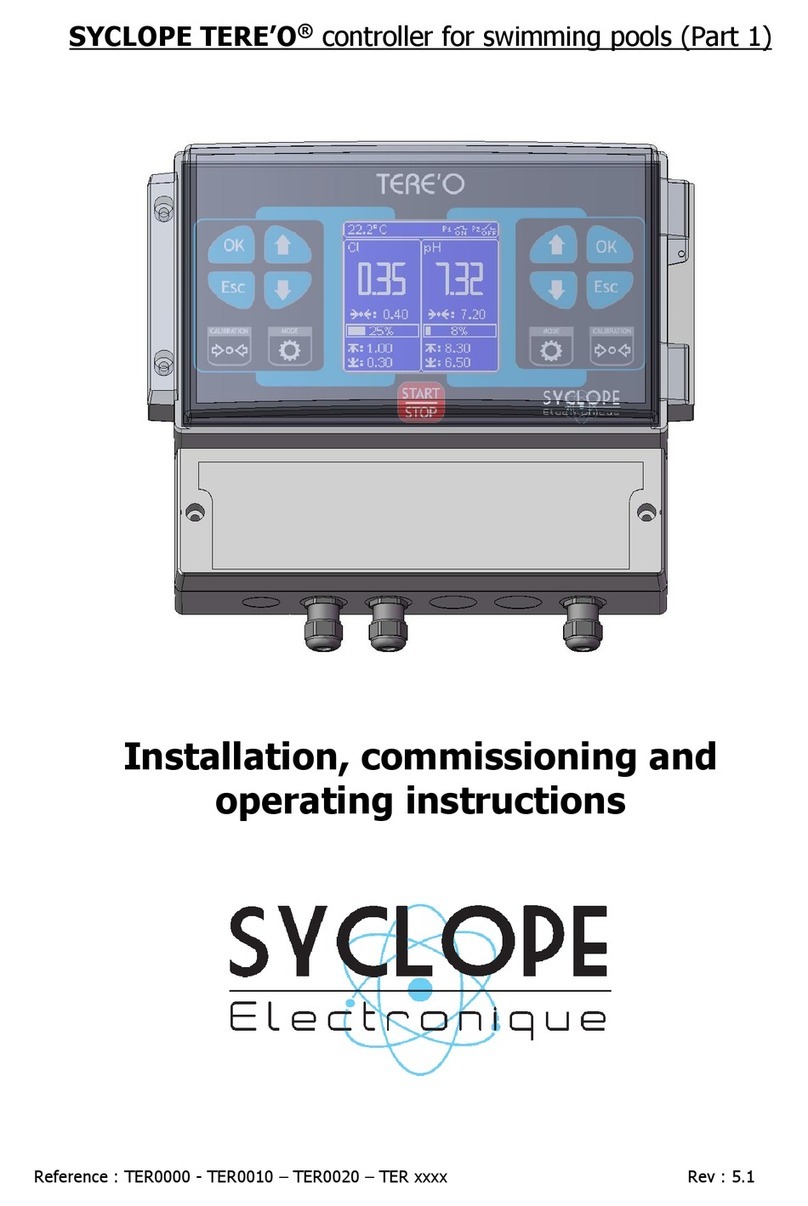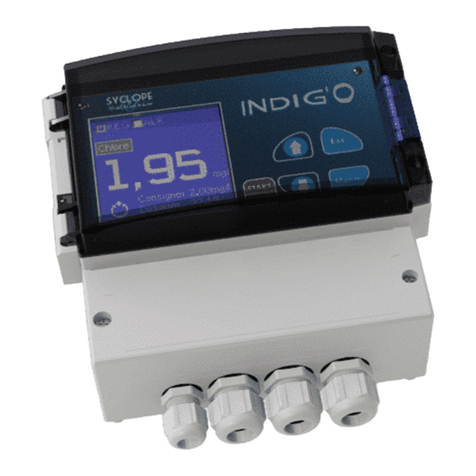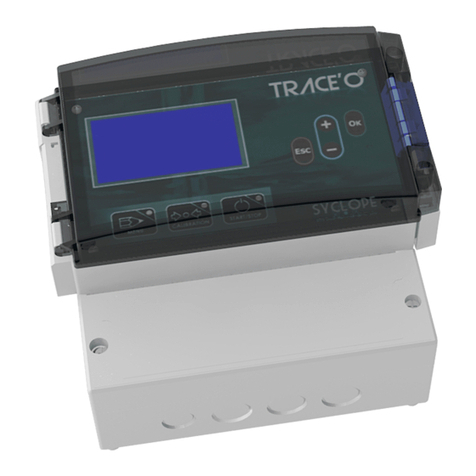Contents Page 4/94
Programming instructions for SYCLOPE DOUBLEAU®
This input is designed to connect pt100 temperature sensors, be sure your sensor is compatible before
using it.....................................................................................................................................56
►Select the sensor kind ...........................................................................................................56
c) Configure IN1 & IN2 input.................................................................................................57
This input is designed to connect different kind of sensors with 0…20mA or 4…20mA transducer, be
sure your sensor is compatible before using it. ...........................................................................57
►Select the sensor kind ...........................................................................................................57
►Select the sensor reference ...................................................................................................57
►Select the unit of sensor .......................................................................................................57
►Select the sensor interface ....................................................................................................58
►Set the sensor measurement range “Min” and “Max”. ...........................................................58
d) Configure K1 & K2 input....................................................................................................59
This input is designed to connect digitals proximity sensors or dry contact switches, be sure your
sensor is compatible before using it. ..........................................................................................59
►Select the sensor kind ...........................................................................................................59
►Select the “Switch” kind ......................................................................................................59
►Select the stand of the switch................................................................................................59
►Select the debounce .............................................................................................................59
►Select the “Flow” kind..........................................................................................................60
►Set the K-factor ....................................................................................................................60
►Set the max flow value..........................................................................................................60
e) Set sensor delay ...............................................................................................................61
►Set the startup delay ............................................................................................................61
f) Configure Vref supply voltage............................................................................................62
This function allows you to set the voltage present on Vref terminal and on IN1 & IN2 terminals. Take
care to not set a voltage higher the maximum voltage required by your sensors...........................62
3) Measure...........................................................................................................................63
4) Flow configuration ............................................................................................................65
5) Tank configuration............................................................................................................67
6) Remote............................................................................................................................68
►Select the “Timer” mode ......................................................................................................69
►Select when the remote control will be done ..........................................................................69
►Set the time slot “Start” and “End”. .......................................................................................69
►Set the beginning and ending dates, “From” and “To”.............................................................69
►Set the days of week which your time slot will be done...........................................................69
►Set the week repletion, means your time slot will be repeated each X weeks............................69
►Select the remote action .......................................................................................................70
70
►Set the remote setpoint ........................................................................................................71
►Set the variation speed between control setpoint and remote setpoint. ....................................71
►Select the “Input” mode ......................................................................................................72
►Select the remote action .......................................................................................................72
72
7) Relay ...............................................................................................................................73
►Select the “Control” mode ...................................................................................................74
►Choose which parameter is assigned to this relay ...................................................................74
►Select the control direction of the actuator connected to this relay ..........................................74
►Select relay rest stand...........................................................................................................75
►Select the drive method ........................................................................................................75
►Set the cycle duration “Period” (PWM only)...........................................................................76
►Set the minimum latch time “Tmin” (PWM only) ....................................................................76
►Set the maximal stroke frequency “Freq” (PFM only)..............................................................76
►Set the control range “Min” and “Max”. ................................................................................77
►Select the “Alarm” mode......................................................................................................78
►Choose which parameter is checked ......................................................................................78
►Choose which alarms can drive the relay................................................................................78
►Select the rest stand .............................................................................................................79




































